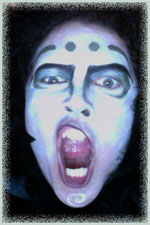 There is something called the Bechdel Test. It is named after Allison Bechdel, and it is used as a way to highlight how small and or insignificant female characters are in movies. The rules are these:
There is something called the Bechdel Test. It is named after Allison Bechdel, and it is used as a way to highlight how small and or insignificant female characters are in movies. The rules are these:
- There must be at least two women, with names, in the film.
- The two women must talk to each other at some point.
- About something other than the leading man.
Notice that this test says nothing about how good the movie actually is. One of my favorite movies of all time, The Princess Bride, fails it horribly. In fact, Princess Bride fails female characters in general, but let’s not get into that. The point is, once you have this in mind, the number of movies—some of them quite good movies—that fail it completely, or on a technicality, is enormous! (Say you have two women who talk to each other, but it is about the male hero; this does not count, since we’re supposedly looking for women who are not acting in the support-the-male-hero role.) It can get quite depressing, actually.
But there’s more. My aunt, Rachel, came up with a different way to test the quality of the female characters. In this version the qualifications are these:
- Is there one or more female characters in the movie?
- Are any of them NOT: a love interest; a mother-figure; a sister; a nurse; a prostitute?
The point of this test is to highlight the fact that female characters are usually not characters at all: they are roles. The men get the characters: the funny mechanic, the sneaky villain, etc. Usually a woman only appears when that person can be nothing else. The love interest in a hetero-male flick? Well, that kinda has to be a woman. The hero’s mother? Again, has to be a woman. You’d be surprised how many female roles exist only because they have to be female.
Even more good movies fail my aunt’s test (let’s call it the Rachel Test) than the Bechdel Test.
And there is mine. It’s not really a test so much as a way of thinking. I came up with it while watching Sweeney Todd (which fails the Bechdel test (none of the women talk to each other) (while they are both alive), and only passes the Rachel test if you consider Mrs Lovett to be only half a love interest, since Sweeney Todd isn’t interested back). My thinking was: well, here was a musical with three (count ‘em: three) major singing female roles. That’s not bad, is it? And then I thought: wait, and how much more exciting would it be to play Anthony instead of Joanna? In fact, all together the male roles were more numerous, more interesting, and had better songs. So I thought: wouldn’t it be funny if you put on a production of Sweeney Todd with cross-casting? All the male roles played by female actors, and vice versa—don’t change anything about the script, just change the actors. Wouldn’t that be awesome? Wouldn’t that be fun?
Except for the poor men, who’d suddenly be left to fight over the naive young love interest, the wrecked tragic love interest, and the only decent part: mad old Mrs Lovett.
I do this with a lot of films: I flip the sexes around so all the male characters are female and vice versa. When I get a story where this doesn’t matter—where presumably male actors would be just as excited to play the female roles—then I know it’s treating its characters fairly.
This is something I strive for in my own work. Forget arbitrary rules, like who talks to whom; make that role good. Make it interesting and moving and powerful. Most of all, make it important.
Women have been considered unimportant for a lot of history; (and still are, in a lot of societies) (I am looking at YOU, Africa, Middle-east) it will take a little while for our popular media to catch up (women seem to do better in television, I notice). But there is no reason that the popular media should continue to reflect the sexist, unfair, insulting attitude the world has had toward women in the past. Instead I think movies and television and popular comic books should lead by demonstration. By having female heroes and having female villains, but more importantly, by having female engineers and scientists and computer nerds and presidents and lawyers and assassins and jet fighters and astronauts and physicists (astrophysicists!) and magicians and admirals and spies and accountants and fry-cooks and (maybe, once in a while) a robot who isn’t sexy. Show the world what women could be doing (what some women already are), instead of relegating them to the supporting, background roles they have traditionally occupied.
In honor of this, I’m going to close with a few movie recommendations that pass at least two out of these three tests. They also happen to be some of my favorite films. They are:
- Chicken Run
- Princess Mononoke
- My Neighbor Totoro
- Kiki’s Delivery Service
- Bend it Like Beckham
- Hairspray
- The Guns of Navarone
- And of course, for the complete and utter annihilation of the relevancy and respect for male characters, look no farther than: Season 1 of My Little Pony: Friendship is Magic
The subjugation and infantilism of women throughout the world is a complicated and difficult problem to solve, but it is very, very easy for story-tellers to show how things could be different. And in the case of the underdogs of history (let’s include people of color and the gays as well, since they’re basically in the same boat), I think it’s important to show how things could be, not necessarily reflect how they actually are. Because once you show a person how things could be better, it goes a long way to figuring out how to make it better.
Life does not necessarily imitate art, but it can be easily influenced by it. So make your art a good influence. I try to.
Goldeen Ogawa can be reached for comment at goldeenogawa@gmail.com, or pecked at on Twitter @GrimbyTweets.






















